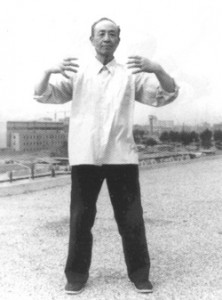 In addition to my usual compliment of recovery drills consisting of mobility exercises, yoga asana, and compensatory movement, for the past year and a half I have been using a top secret protocol in my exercise recovery work. This exceedingly simple-seeming protocol has consistently accelerated my recovery, allowed me to reach new levels of relaxation, and strengthened the mind-body connection beyond any work I have ever done. It has also managed to increase energy levels while fortifying my body against the daily rigors of life, work, and family stresses.
In addition to my usual compliment of recovery drills consisting of mobility exercises, yoga asana, and compensatory movement, for the past year and a half I have been using a top secret protocol in my exercise recovery work. This exceedingly simple-seeming protocol has consistently accelerated my recovery, allowed me to reach new levels of relaxation, and strengthened the mind-body connection beyond any work I have ever done. It has also managed to increase energy levels while fortifying my body against the daily rigors of life, work, and family stresses.
While this method is elegantly simple to practice, requires very little space, no special equipment, and can be done at virtually any time of day, it also is startlingly deep. What is this super secret method of recovery, you ask?
Zhan Zhuang. Also known as Standing Post or simply, Standing.
Standing exercise has been used as a method of relaxation and health cultivation for thousands of years. The earliest known reference to standing appears in the Yellow Emperors classic of Chinese Medicine. “In ancient times great masters stood on earth, supporting heaven, controlling yin and yang, breathing with essence of qi, standing alone, guarding spirit, with body being as one”. Its health preserving and sustaining effects have been documented in hospitals and medical clinics across China for decades.
Standing exercise acts like a system-wide reboot for the whole body. It stimulates the nervous system, increases circulation, and raises energy levels while providing deep relaxation for both mind and body. Aches, pains, old injuries, muscular tensions and imbalances are highlighted and brought to the fore by this wonderful method and then slowly dissolved over time and completely released.
This exercise looks very easy from the outside, after all, you’re just standing there. However, inside, there is a lot going on. It is challenging, sometimes frustrating, yet a highly beneficial and extremely rewarding practice. The only way to truly appreciate it is to do it and experience it for yourself.
Stand In the Place Where You Are
Usually it is recommended that Standing (like most other methods of exercise and martial art) should be learned from a qualified teacher. In the beginning there are many subtle adjustments in posture, levels of relaxation and tensions within the body that a new student just learning zhan zhuang may be unable to correct for themselves and thus require a more experienced person to guide them. 
However, if you’d like to give it a try on your own, here are some basic guidelines to follow:
- Stand in a natural posture, feet shoulder width apart, knees bent
- Allow the legs to form an arch. This will be critical for supporting and transferring force
- Hips neither tucked nor tilted backwards. Feel as if sitting on a paper stool.
- Low back remains flat
- Shoulders over hips, knees over toes
- Suspend the head from the crown. This results in slight tuck of the chin and a gentle stretch of the whole spine.
- Round the arms in front of the chest as if holding a large paper ball. If you hold the ball too tight it will break, too light and it will fly away.
- Relax
- Now relax more.
These are very basic, general guidelines for standing. There is much more that goes on internally for both health standing and building martial power. As we say in Japanese Budo, “there is a kuden (oral teaching).”
To learn more about zhan zhuang and its role as a foundational practice in the Chinese Internal Martial Art of Yiquan, check out this 2-part interview with my good friend and Yiquan teacher, Jaime Morrell:
An Introduction to Yiquan: Martial Art, Health, and Physical Fitness






3 Comments
A.H. James
August 21, 2012I have got to say, you have me very intrigued with this blog post! I have been interested in not only become fit and healthy myself, but to help others as well. I haven’t studied Zhan Zhuang before, but now I’m very interested. So you stand there in the position, are you suppose to be focusing on anything specific? Thanks
Jon
August 23, 2012Hi A.H.,
Once you have set up the structral requirements listed in the post, you focus on relaxing while keeping them. Not as easy as it sounds. Give it a try!
jithin
October 5, 2012Extremely helpful information particularly the last part I care for such info much. I was looking for this particular info for a very long time. Thank you and best of luck.
Leave A Response